The Chianina
(pronounced keeah-nee-na), is an Italian beef breed, probably
the most renowned worldwide. The breeding zone of this cattle
is mainly Central Italy, and particularly the regions Tuscany
(35% of heads), Umbria (34%) and Latium (20%). The name of this
breed comes from Valdichiana, the valley of Chiana river, in the
province of Arezzo, which is considered the primitive nucleus
of the breed.
Chianina's celebrity is mainly due to the excellent quality of
its meat, and to its beauty, thanks to its full white coat, imposing
height and great harmony of its proportions.
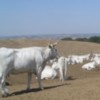
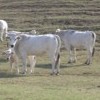
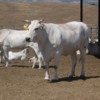
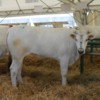
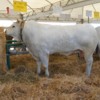
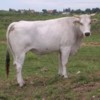
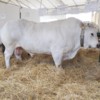
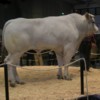
History
Cornevin, in 1891,
proposed that cattle from Siena and Arezzo descended from Bos
trochoceros, one of the species of wild cattle that in the
1800s were deemed to be ancestors of the different strains of
domestic cattle. According to tradition, Chianina is an ancient
breed spread in Italy for over two thousand years, and this would
be confirmed by the descriptions given by classical authors. Virgil
in "Georgicon" (II, 146-148) describes
the white bulls reared in Clitunno River area, in Umbria, sacrificed
to the gods during the war triumphs, and defined as the greatest
of all the victims. Also Columella in "De
Re Rustica" describes Umbrian cattle as "vastos
et albos", that is huge and white.
Also the bulls represented in scenes of sacrifices, like "Suovetaurilia",
in which a pig (sus), a sheep (oves) and a bull
(taurus) were sacrificed to Mars (photo 1-2) are referable to Chianina type
(see reliefs from Campus Martius,
displayed at the Louvre museum in Paris, from the Roman
Forum and from the Trajan's Column, 1,
2 and 3).
The cattle represented there are big and their proportions look
similar to those of Chianina cattle, also considering the unavoidable
inaccuracy in representation, due to the narrowness of the space
and to the symbolic character of the reliefs. A bovine resembling
a Chianina is also represented on 15th
Century Siena Cathedral façade.
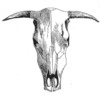
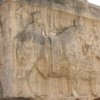
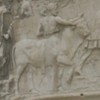
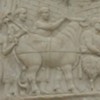
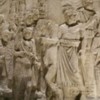
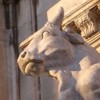
Although literary testimonies
and artistic representations do not allow to affirm with certainty
that the Chianina breed has been reared in Italy for many centuries,
many hints tell us that the Romans had a strong demand for large
white cattle, for public and private sacrifices. The meat of these
animals had to be consumed after the sacrifice, and therefore
it was required to have good quality traits. In addition to that,
the cattle were probably produced by the same herds that provided
the many working oxen needed for farm works and transport.
These animals, which were big, white, with good quality meat and
good traits as draft animals, are likely to be the ancestors of
Chianina, although it can not be affirmed with certainty. More
details can be found in this article
(original
version in Italian).
Finally, it can be observed that the current distribution areas
of Chianina breed are the provinces of Perugia, Rieti, Arezzo,
Siena, Terni, Grosseto, Viterbo, Pisa, Livorno and Florence, which
coincide largely with those in which the Etruscan civilization
developped.
The Val di Chiana (Chiana Valley) is formed by the Chiana River,
which the Etruscans called Clans, and mentioned by Strabo
(Geographia,
V, 3, 6-7) as Klanis
(Klanis). Already in 15 A.D., when Tiberius ruled,
according to Tacitus (Annales,
I. 76), the river
contributed to the flood of the Tiber, so that it was thought
to divert it into the Arno. The project was not put into effect,
for the protests of the Florentines at the Roman Senate (ibidem, I. 79) however, it was decided to build
a dam in order to prevent the flood waters from falling into the
Tiber, ando so the valley started to turn into a swamp. In the
Middle Ages. the swamp area continued to broaden and malaria spread,
as Dante (Inferno,
XXIX, 46-47) also
tells. As a result, agriculture and breeding, and thus livestock
improvement, were neglected. The first draining plans were drawn
up by Galileo Galilei and Evangelista Torricelli, but only at
the beginning of the 18th century draining works was promoted
by the Grand Duke of Tuscany, and then the agricultural activity
restarted.
In 1862, Cuppari described two Tuscan breeds, the Maremmana and
the Valdichianese, the most improved, with beautiful shapes, except
for the rump, not very suitable for draft, but definitely suitable
for fattening, if it weren't for too long limbs, and for being
"in the hands of peasants" rather than in those
of technicians. Cuppari also describes white cattle from Pisa
and Siena areas, with various shares of Chianina blood ("an
indefinite bunch of mongrels"), with excellent traits
for draft.
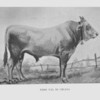
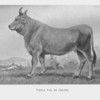
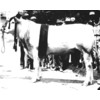
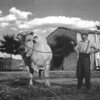
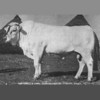
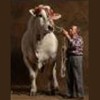
In 1872 Vallada recalled
the partition of Tuscan cattle, adding the Pisana as a third breed.
He defined Val di Chiana as a remarkable and ancient breed, and
cited a possible derivation from it of various Italian breeds
and of Charolaise, with which it would have been crossed in recent
times. The breed is described as having good draft attitudes,
though being very light-framed and "not provided with
a strength corresponding to body size." On the other
hand, the animals showed "a great degree of fattening"
providing "a great net yield of meat." Morphological
traits describe a slender animal, with a height between 162 and
167 centimeters, but with a rump markedly sloping towards the
back and the sides.
In 1903 Ferruccio Faelli, a zootechnician from Parma, in his treatise
on farm animal breeds, describes Chianina as "beautiful,
good and tame", with beef traits less marked than in
the current breed, given the prevailing draft purpose. Specifically,
Faelli describes a massive skeleton, narrow rump and forelimbs
more developped than hindlimbs. Faelli considers Chianina as a
likely derivative of Maremmana,
improved by a more rational breeding system, and agrees that it
was a possible ancestor of Charolaise. The images of Val di Chiana
bull and a cow,
accompanying the text, raise some doubts about the accuracy of
the representation.
The Chianina has been for centuries used to pull the plough or
drag carts, but the spread of mechanization prompted the conversion
to a specialized beef breed. The selection was started by professor
Ezio Marchi (1869-1908), hailing from Bettolle, Val di
Chiana, and continued by professor Renzo Giuliani (1887-1962),
director of the Institute of Zootechnics at the University of
Florence, who in 1927 began a morphological selection aimed to
obtain double purpose (beef and draft) animals. Starting from
1931, Giuliani focused more decisively the selection towards beef
purpose, with shorter limbs, longer trunk, and increasingly muscular
rump, thighs and buttocks.
The Manuale dell'agronomo (Agronomist's Handbook)
written by Tassinari in 1941, published the traits of the major
zootechnical breeds, officially determined by the Ministry of
Agriculture and Forestry, from the data provided by technicians
and breeders. The handbook reported, in addition to Chianina,
the varieties "Valdarno", slightly smaller, and
"Perugina" slightly bigger. The transition to
the beef type was already advanced, with the improvement of the
hindlimbs muscles and dressing percentage that could reach 60%,
but with medium or well-developed dewlap. In the same year 1941
Albertario cites 133,273 heads of Chianina and 168,619 of Perugina,
almost all reared in central Italy.
Traits
The Chianina is
renowned for the quality of its meat, tasty and lean, and for
the good productive performances like high average daily gains
and very good dressing percentages, due to its low percentages
of bone on the weight; it also shows a great rusticity, meant
as skill to survive and calve in difficult, harsh environment,
resisting to parasites and predators.
Description
Chianina has a
porcelain-white coat, slate-black skin and black pigmentation
of mucosae, hooves, switch, sheath hair, base of the scrotum and
tips of the horns. The head is light, expressive, with short horns;
the trunk is long and cylindrical, with broad and thick back and
loins, wide and horizontal rump, long and convex thigh and buttocks,
light and strong skeleton, limbs correctly directed. The calf
at birth has a fawn coat (in Italian "fromentino",
meaning "wheat-coloured"), and at 3 - 4 months
of age assumes the white coat typical of the breed.
Size
Chianina is a
giant breed, with huge withers height and trunk length. Donetto,
a Chianina bull from Tenuta della
Fratta farm, at Sinalunga, in the province of Siena, (photo
1 and 2),
reached in 1955 the world record of weight for the bovine species,
never broken until today, with 1,750 kg, with a withers height
of 185 cm. Chianina oxen can reach a withers height of 200 cm.
In spite of the impressive dimension of the breed, Chianina cows
have a great ease of calving, due to a dolichomorphic structure,
and the birth weight can reach 50 kg, also with unattended calving. The weight of the cows is in average
800-900 kg, but it can easily reach 1,000 kg. The average daily
growth of the best individuals can be over than 2 kg. The ideal
slaughtering weight is 650 - 700 kg at an age of 16 - 18 months
and the dressing percentage is around 64-65%.
|
|
|
|
|
|
|
|
|
|
Herd
book
Starting from
1961 Chianina herd book is kept by ANABIC
(Association of Breeders of Italian Cattle Breeds) and the young
bulls are reared in station in performance test by the same association
at San Martino in Colle Bull Testing Station. The selection is
based on growth, muscularity, dressing percentage and yield of
retail cuts. For females the criteria are morphology, reproductive
efficiency, and maternal attitudes, that is, the ability to raise
calves until weaning. The selection scheme involves the use, in
the programmed matings, of the best bulls tested in performance
test and the best cows, with the greatest possible use of artificial
insemination.
|
|
||||||
|
|
|
|
|
|
|
|
|
|
|
|
|
|
|
|
"Fiorentina"
steak
Though nowadays
people tend to call "fiorentina" any T-bone steaks,
the name should be correctly attributed only to the sirloin steaks
with vertebra and fillet, provided by a Chianina young bull or
heifer. Given the gigantic nature of the breed, a "fiorentina"
reaches remarkable weights of over 1.2 kg (2.65 lbs), with a thickness
of at least 4 cm (1.57").
PGI
mark
Young cattle of
Chianina slaughteres between 12 and 24 months, together with those
of two other Italian white beef breeds, Marchigiana and Romagnola,
can be marketed with the European mark PGI (Protected Geographical
Indication), "Vitellone Bianco dell'Appennino Centrale"
(White Young Bull of the Central Apennines), under the European
Union's Commission Regulation No 134/98 of 20 January 1998. The
breeding area is a wide region of Central-South Italy, with an
extension to a part of Emilia Romagna (download the product
specification, in Italian pdf, 415 KB).
The mark of Vitellone
bianco also bears the indication of the breed to which the animal
that provided the meat belongs. This meat is renowned for being
very tasty and with very good nutritional traits.
The
Chianina and the Palio
In the Palio
di Siena, during the historical pageant that precedes the
"carriera", that is the horse race, the "drappellone"
or "cencio", i.e. the painted banner which is
the award for the winning contrada (city quarter), parades along
the square transported on a cart, the carroccio,
pulled by four Chianina oxen.
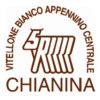
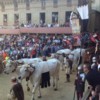
Abroad
In the last 40
years Chianina bulls and their semen was exported in many countries:
the first impulse was given by U.S. Army soldiers settled in Italy
during and past the World War II, which found out Chianina and
made it known to their country; in 1971 Chianina semen was first
imported in USA and Diaceto I was the first bull introduced. The
first Chianina calf born in USA was a black crossbred bull-calf
Chianina x Angus/Holstein, born 1972 January 31st, at Tannehill
Ranch, King City, California. In the first years, by sanitary
precautions, the USA imported only semen, while Canada imported
also livestock; later on "Headliner"
became Chianina symbol in USA (photo 8).
Today Chianina is present in Europe, South Africa, Northern, Central
and Southern America and Australia as a crossing for British breeds
(Aberdeen Angus, Hereford) or on Bos indicus cattle. It
must anyway notice that even in some region of Italy the Chianina
beef is deemed as an exotic food! (see
picture, taken in Susegana, not far from Venice).
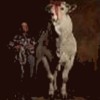
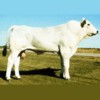
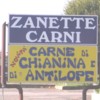
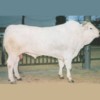
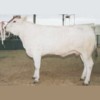
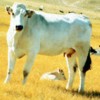

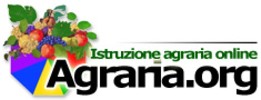
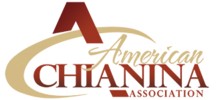







Bibliography:
ALBERTARIO Paolo (1941)
Consistenza numerica e distribuzione delle principali razze bovine
allevate in Italia. Giornale degli Allevatori, 6 (16) 4-6.
ANABIC (1999) La razza Chianina. Tipolitografia Grifo,
Perugia.
BETTINI Tito Manlio (1962) L'evoluzione dell'allevamento bovino
in Italia in un secolo di unità. Rivista di Zootecnia,
35: 315-329, 361-374.
BIGI Daniele, ZANON Alessio (2008) Atlante delle razze autoctone.
Edagricole, Bologna.
BORGIOLI Elvio (1981) Razza bovina Chianina. Edagricole, Bologna.
CORNEVIN Charles (1891) Traité de zootechnie générale.
Librairie J.-B. Baillière et Fils, Paris, France.
CORSINI Edoardo (1742) Ragionamento istorico sopra la Valdichiana
in cui si descrive l'antico e presente suo stato. Stamperia
di Francesco Moücke, Firenze.
CUPPARI Pietro (1862) Lezioni di economia rurale date preventivamente
in Pisa nel 1855. Tipografia M. Cellini e C., Firenze.
FAELLI Ferruccio (1903) Razze bovine, equine, suine, ovine e caprine.
Ulrico Hoepli, Milano.
GADDINI Andrea (2014) La sacra Chianina. Eurocarni, 8:
110-117. link
SAÑUDO
ASTIZ Carlos (2011) Atlas Mundial de EtnologÍa Zootécnica.
Servet, Zaragoza, Spain,
SAVE/Monitoring Institute (2002) Risorse genetiche agrarie in
Italia. Monitoring Institute, San Gallo, Svizzera..pag.
118-119.
TASSINARI Giuseppe (1941) Manuale dell'agronomo. Ramo Editoriale
degli Agricoltori. pag. 828-830.
TORTORELLI Nicola (1984) Zootecnica speciale. Edagricole, Bologna.
VALLADA Domenico (1872) Taurologia o cenno zootecnico e zoografico
del bue. Unione Tipografico-Editrice Torinese, Napoli-Roma.
visited websites:
Tacitus, Annales www.intratext.com/y/ENG1335.HTM
Tenuta La Fratta - Sinalunga
(SI) www.tenutalafratta.it
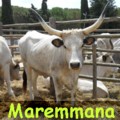
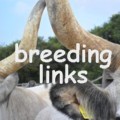
 page
created: April 18th 2001 and last updated: April 22nd, 2025
page
created: April 18th 2001 and last updated: April 22nd, 2025